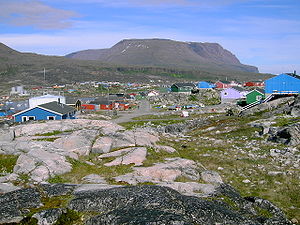Remi murmured, "The road less traveled."
"The Road Not Taken" is a poem by Robert Frost, published in 1916 in the collection Mountain Interval. It is the first poem in the volume and is printed in italics. The title is often mistakenly given as "The Road Less Traveled", from the penultimate line: "I took the one less traveled by".
"The Road Not Taken" is a narrative poem consisting of four stanzas of iambic tetrameter (though it is hypermetric by one beat - there are nine syllables per line, instead of the strict eight required for tetrameter) and is one of Frost's most popular works. This, being among the best known, is also one of the most often misunderstood poems. It has been commonly studied in high school literature classes and can often relate to the reader's life as in making difficult decisions.
cannot be taken literally: whatever difference the choice might have made, it could not have been made on the non-conformist or individualist basis of one road's being less traveled, the speaker's protestations to the contrary. The speaker admits in the second and third stanzas that both paths may be equally worn and equally leaf-covered, and it is only in his future recollection that he will call one road "less traveled by."
- I took the one less traveled by,
- And that has made all the difference.
The sigh can be interpreted as one of regret or of self-satisfaction; in either case, the irony lies in the distance between what the speaker has just told us about the roads' similarity and what his or her later claims will be. Frost might also have intended a personal irony: in a 1925 letter to Crystine Yates of Dickson, Tennessee, asking about the sigh, Frost replied, "It was my rather private jest at the expense of those who might think I would yet live to be sorry for the way I had taken in life."
According to Larry L. Finger's analysis, nearly all critics have agreed that the sigh represents regret as this is mirrored in the regretful tone of the opening lines. He quotes scholar Eleanor Sickels as saying that the poem is about "the human tendency to wobble illogically in decision and later to assume that the decision was, after all, logical and enormously important, but forever to tell of it 'with a sigh' as depriving the speaker of who-knows-what interesting experience."
Likewise, Lawrance Thompson is cited as saying that the speaker of the poem is "one who habitually wastes energy in regretting any choice made: belatedly but wistfully he sighs over the attractive alternative rejected."
While a case could be made for the sigh being one of satisfaction, given the critical support of the 'regret' analysis it seems fair to say that this poem is about the human tendency to look back and attribute blame to minor events in one's life, or to make more meaning of things than they may deserve"Stronzo!" Bianco barked.
[Stronzo redirects to Asshole] The word asshole, a variant of arsehole, which is still prevalent in British and Australian English, is a vulgar to describe the anus, often pejoratively used to refer to people.the Carabinieri will be happy to embrace him.
The Carabinieri (formally Arma dei carabinieri, "arm of carabineers" or "corps of carabiniers" is the national military police of Italy, policing both military and civilian populations. It was originally founded as the police force of the Kingdom of Sardinia. During the process of Italian unification, it was appointed the "First Force" of the new national military organization. Although the Carabinieri assisted in the suppression of opposition during the rule of Benito Mussolini, they were also responsible for his downfall and many units were disbanded by Nazi Germany, which resulted in large numbers of Carabinieri joining the Italian resistance movement. Since 2001, it has been one of the four Italian Armed Forces










